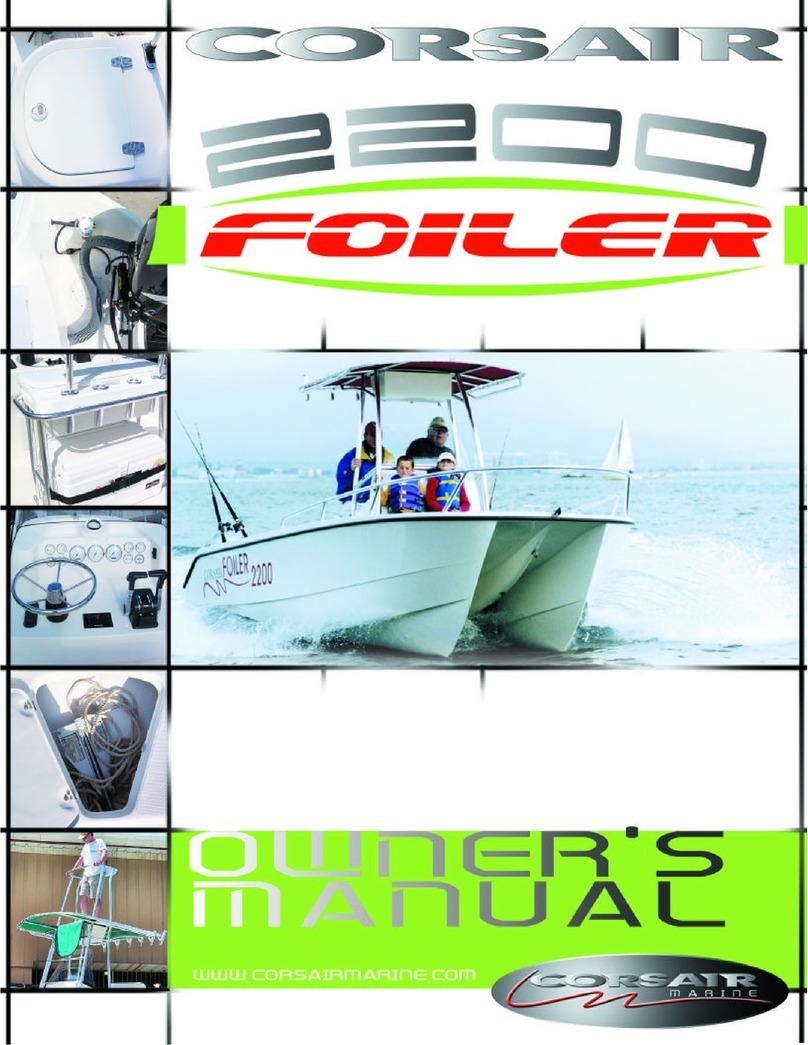
2 | Page
Copyright © 2014 by Corsair Marine International
TABLE OF CONTENTS
GENERAL ............................................................................................................................. 4
PREPARATION ..................................................................................................................... 4
LOADING ............................................................................................................................. 4
SAFETY COMPARTMENT ..................................................................................................... 5
OUTBOARD MOTOR............................................................................................................ 6
TRAILERING ......................................................................................................................... 7
RIGGING .............................................................................................................................. 8
LAUCHING ......................................................................................................................... 14
MAST RAISING ON THE WATER ........................................................................................ 18
RUDDER............................................................................................................................. 19
DAGGERBOARD................................................................................................................. 19
MAST SETUP...................................................................................................................... 20
SAILING.............................................................................................................................. 21
THE BASICS.................................................................................................................... 21
ROTATING MAST CONTROL .......................................................................................... 25
WINDWARD PERFORMANCE ........................................................................................ 26
REACHING ..................................................................................................................... 27
SCREACHER ................................................................................................................... 27
SPINNAKER.................................................................................................................... 28
SPINNAKER JIBING ........................................................................................................ 29
SPINNAKER SAILING DOWNWIND ................................................................................ 29
SAFE SAILING RECOMMENDATIONS............................................................................. 30
SAILING HINTS............................................................................................................... 33
ANCHORING ...................................................................................................................... 34
BEACHING ......................................................................................................................... 35
RETRIEVING TO TRAILER ................................................................................................... 35
DE - RIGGING..................................................................................................................... 38
LIFTING OUT...................................................................................................................... 40
MARINA DOCKING ............................................................................................................ 40
SAFETY............................................................................................................................... 40
UNSINKABILITY.............................................................................................................. 41
OFFSHORE SAILING ....................................................................................................... 42
CAPSIZE ......................................................................................................................... 42
RIGHTING ...................................................................................................................... 43
PERSONAL RESPONSIBILITY .......................................................................................... 46
SAFETY IN GENERAL ...................................................................................................... 46
TECHNICAL NOTES ............................................................................................................ 47
WINCH LINE................................................................................................................... 47
SPRING RETAINING CLIPS.............................................................................................. 47
LAUNCHING................................................................................................................... 47
BEAM BOLTS ................................................................................................................. 47




























